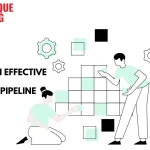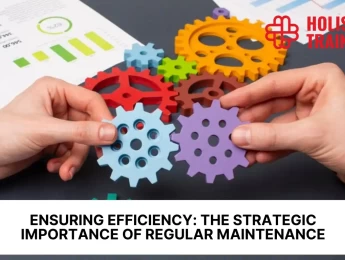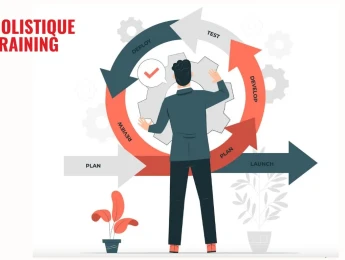- Table of Contents
- Introduction
- What is 360 Degree Feedback?
- What Should Be Included in a 360 Degree Feedback?
- 1- Competency Assessment:
- 2- Behavioural Feedback:
- 3- Strengths and Areas for Improvement:
- 4- Open-Ended Comments:
- 5- Self-Assessment:
- 360 Degree Feedback vs. Performance Reviews: What’s the Difference?
- Sources of Feedback:
- Comparison Table
- Focus Areas:
- Development Orientation:
- Benefits of 360-Degree Feedback
- Comprehensive View
- Enhanced Self-Awareness
- Improved Communication
- Succession Planning
- Employee Development
- Accountability and Ownership
- Objective Evaluation
- Drawbacks of 360-Degree Feedback
- Time-Consuming Process
- Feedback Quality
- Potential for Bias
- Emotional Impact
- Implementation Challenges
- Data Management
- Risk of Misuse
- Follow-Up Actions
- How Do You Implement a 360 Degree Feedback System in the Workplace?
- Define Objectives:
- Secure Buy-In from Leadership:
- Develop a Clear Process:
- Select Relevant Competencies and Behaviours:
- Choose the Right Feedback Tools:
- Train Participants:
- Ensure Anonymity and Confidentiality:
- Communicate Clearly:
- Distribute and Collect Feedback:
- Analyse the Data:
- Provide Feedback:
- Create Development Plans:
- Monitor and Review the Process:
- Steps HR Should Take After Getting the Results
- 1- Review and Interpret the Data
- 2- Prepare Feedback Reports
- 3- Confidentiality and Sensitivity
- 4- Feedback Sessions
- 5- Develop Actionable Development Plans
- 6- Provide Resources and Support
- 7- Monitor Progress
- 8- Evaluate the Impact
- 9- Continuous Improvement
- Examples of 360 Degree Feedback Questions
- 360 Degree Feedback Software
- Conclusion
Introduction
The dynamic landscape of modern workplaces necessitates comprehensive and multidimensional approaches to employee evaluation. One such method that has gained significant traction is the 360-degree Feedback system. Originating in the 1950s and becoming more prevalent in the 1990s, this feedback method has transformed how organisations assess and develop their employees. This blog post will explore its definition, benefits, implementation steps, challenges, and effective strategies for utilising 360-degree Feedback to foster employee growth and organisational success.
What is 360 Degree Feedback?
360-degree feedback, or multi-rater feedback, is a holistic employee evaluation process that gathers feedback from various sources. This includes peers, subordinates, supervisors, and sometimes even clients. The purpose is to provide a well-rounded view of an employee's performance, skills, and areas for development. Unlike traditional performance reviews, which typically involve feedback from a single source (usually a direct supervisor), 360 Degree Feedback incorporates multiple perspectives, making it a more balanced and comprehensive evaluation tool.
What Should Be Included in a 360 Degree Feedback?
A thorough 360-degree Feedback process should encompass several critical components to ensure effectiveness and insightfulness. Each element plays a crucial role in providing comprehensive and actionable feedback.
1- Competency Assessment:
At the heart of 360 Degree Feedback is evaluating key competencies relevant to the employee’s role. This involves assessing skills such as leadership, communication, teamwork, problem-solving, and technical abilities. Competencies should be clearly defined and aligned with organisational goals and values. For example, leadership might be assessed in terms of the ability to inspire and motivate others, make strategic decisions, and manage conflict. Communication could be evaluated based on clarity, listening skills, and the ability to convey complex information effectively.
2- Behavioural Feedback:
Beyond competencies, it is important to gather observations about the employee’s behaviour and its impact on the workplace. Behavioural feedback provides insights into how the employee interacts with others, their attitudes, and their level of professionalism. For instance, feedback might address how well the employee collaborates with team members, handles stress, or demonstrates integrity. Specific examples of behaviours can help contextualise the feedback and make it more actionable. For example, noting that an employee consistently supports colleagues during tight deadlines provides clear, behaviour-based evidence of teamwork.
3- Strengths and Areas for Improvement:
Identifying an employee’s strengths and areas for improvement is crucial for balanced feedback. Strengths are the qualities and skills the employee excels at and can be leveraged for greater impact within the organisation. For example, an employee might be particularly adept at innovative thinking or leading cross-functional projects. On the other hand, areas for improvement highlight where the employee needs development. These might include skills or behaviours critical for the employee’s current role or future career aspirations. Providing constructive feedback on areas for improvement helps employees focus their development efforts and set realistic, achievable goals.
4- Open-Ended Comments:
Including open-ended questions in the feedback process allows raters to provide specific examples and detailed observations that structured questions might not capture. Open-ended comments can offer deeper insights and context, making the feedback more meaningful and actionable. For example, questions like, "Can you provide an example of how this employee demonstrated leadership in the past quarter?" encourage raters to give detailed, specific feedback. This qualitative data complements the quantitative ratings and provides a richer understanding of the employee’s performance.
5- Self-Assessment:
Incorporating a self-assessment component allows employees to reflect on their performance and compare their self-perception with the feedback from others. Self-assessment encourages self-awareness and personal accountability, and it can highlight any gaps between how employees view themselves and how others perceive them. For example, employees might rate themselves highly on teamwork, but feedback from peers might suggest room for improvement in collaboration. This comparison can be a powerful tool for personal growth and development, helping employees to see areas where they may need to adjust their behaviours or perceptions.
By including these elements, a 360-degree Feedback system can provide a comprehensive, balanced, and actionable evaluation of employee performance. This not only helps identify strengths and areas for development but also fosters a culture of continuous improvement and open communication within the organisation.
360 Degree Feedback vs. Performance Reviews: What’s the Difference?
While both 360-degree Feedback and traditional performance reviews aim to assess employee performance, key differences between the two significantly impact how feedback is gathered, interpreted, and utilised.
Sources of Feedback:
Traditional performance reviews typically involve feedback from a single source, usually the direct supervisor. This singular perspective can provide a focused view of the employee's performance but may miss out on the broader context of how the employee interacts with peers, subordinates, and other stakeholders. In contrast, 360 Degree Feedback incorporates multiple perspectives by gathering input from a variety of sources, including peers, subordinates, supervisors, and sometimes even clients. This multi-source approach offers a more holistic and comprehensive view of the employee's performance, capturing diverse insights that a single-source review might overlook.
Comparison Table
Focus Areas:
Traditional performance reviews often concentrate on past performance and achieving specific goals or objectives. They tend to be more results-oriented, emphasising the outcomes of the employee's work over a set period. This can sometimes lead to a narrow focus on quantifiable metrics, such as sales figures, project completion rates, or other key performance indicators. In contrast, 360 Degree Feedback emphasises overall competencies and behaviours. It assesses how employees perform in various aspects of their role, including leadership, communication, teamwork, and interpersonal skills. This broader focus provides a more balanced evaluation of both the results achieved and the behaviours exhibited, offering deeper insights into the employee's potential and areas for development.
Development Orientation:
One of the primary goals of 360 Degree Feedback is to support personal and professional development. The feedback collected is often used to create individualised development plans, identify training needs, and guide career progression. This developmental focus encourages employees to view feedback as an opportunity for growth rather than merely assessing past performance. On the other hand, traditional performance reviews are often more evaluative and linked to compensation, promotions, or other administrative decisions. While they can also identify development needs, the primary focus is evaluating past achievements and setting future performance targets. This can sometimes create a more judgmental atmosphere, where employees may feel evaluated rather than supported.
Overall, while traditional performance reviews provide valuable insights into past performance and goal achievement, 360-degree Feedback offers a more comprehensive and development-focused approach. By incorporating multiple perspectives and focusing on competencies and behaviours, 360-degree Feedback helps organisations foster a culture of continuous improvement and holistic development.
Benefits of 360-Degree Feedback
Implementing a 360-degree feedback system offers numerous benefits for organisations and employees alike, enhancing overall performance, development, and workplace dynamics. A case study fromTalent for Growth highlights the effectiveness of 360-degree feedback. Bucks New University in the UK aimed to cultivate strong leaders capable of navigating the complexities of higher education. They implemented a 360-degree feedback program to foster a culture of feedback, enhance faculty working relationships, and focus on leadership development. A year later, a survey revealed that 100% of the managers observed positive changes in their direct reports, resulting in tangible benefits – which clearly shows how effective this system is. Here are some other notable benefits to mention:
Comprehensive View
Employees receive a well-rounded perspective of their performance by collecting feedback from various sources. This multidimensional approach captures insights from supervisors, peers, subordinates, and sometimes clients, providing a fuller picture than single-source evaluations. It helps identify consistent patterns in behaviour and performance, offering a more accurate assessment of an employee's overall contributions and impact.
Enhanced Self-Awareness
Employees gain insights into how others perceive their strengths and areas for improvement, promotingself-awareness and personal growth. This increased self-awareness helps employees recognize their blind spots and understand the impact of their actions on others, which is crucial for personal and professional development. It fosters a mindset of continuous learning and self-improvement, encouraging employees to take ownership of their development.
Improved Communication
The feedback process encourages open and honest communication within teams, fostering a culture of transparency and trust. Regularly sharing feedback helps normalise the process, making it a standard part of the organisational culture. This open communication can lead to stronger working relationships, as employees feel more comfortable discussing their performance and development with colleagues and supervisors. It also helps address issues before they escalate, promoting a more harmonious and collaborative work environment.
Succession Planning
Identifying high-potential employees and their development needs helps organisations plan for future leadership roles. Through 360 Degree Feedback, organisations can pinpoint employees who demonstrate the necessary competencies and behaviours for higher-level positions. This information is invaluable for creating targeted development programs and succession plans, ensuring the organisation has a pipeline of capable leaders ready to step into key roles as needed.
Employee Development
The feedback highlights areas for professional development, guiding employees in their career progression. By clearly identifying strengths and areas for improvement, employees can focus their development efforts more effectively. This targeted approach to development helps employees acquire the skills and competencies needed for their current roles and future career aspirations. It also increases employee engagement and retention, as employees feel supported in their professional growth and see a clear path for advancement within the organisation.
Accountability and Ownership
Employees become more accountable for their actions and behaviours by involving multiple raters in the feedback process. Knowing that feedback will come from various sources encourages employees to maintain consistent performance and professional conduct across different interactions and settings. This sense ofaccountability can drive higher performance standards and a stronger commitment to organisational values and goals.
Objective Evaluation
Using multiple raters reduces the potential for bias that can occur in traditional performance reviews conducted by a single supervisor. This objectivity ensures the feedback is more balanced and fair, accurately representing an employee's performance. It helps make more informed decisions regarding promotions, rewards, and development opportunities, thereby enhancing overall fairness and equity within the organisation.
In summary, 360-degree Feedback offers a robust framework for employee evaluation and development, contributing to a more dynamic, transparent, and high-performing organisational culture.
Drawbacks of 360-Degree Feedback
While 360-degree feedback systems offer many benefits, they also come with several potential drawbacks that organisations must consider and address to ensure the process is effective and fair.
Time-Consuming Process
Implementing a 360 Degree Feedback system can be a time-intensive process. Collecting, analysing, and synthesising feedback from multiple sources requires significant effort from HR personnel and participants. This can be especially burdensome in large organisations where the volume of feedback is substantial. The time required to complete the surveys, compile the data, and generate reports can detract from other essential tasks, leading to potential productivity losses.
Feedback Quality
The quality of the feedback received can vary greatly. Not all raters may provide constructive, honest, or thoughtful feedback. Some participants might give overly positive feedback to avoid conflict or overly negative feedback due to personal biases or grudges. This variability can lead to inaccurate assessments that do not reflect the employee’s performance, undermining the credibility of the feedback process and its outcomes.
Potential for Bias
Despite efforts to reduce bias by collecting feedback from multiple sources, biases can still creep into the process. Personal relationships, office politics, and subjective opinions can influence feedback, leading to skewed results. For instance, friends might rate each other more favourably, while conflicts or competition might result in harsher evaluations. This can affect the objectivity and fairness of the feedback, compromising its value and effectiveness.
Emotional Impact
Receiving critical feedback from multiple sources can be overwhelming and stressful for employees. Negative feedback, even when constructive, can affect morale and self-esteem, potentially leading to disengagement or resentment. If not handled sensitively, the feedback process can create anxiety and reduce employees’ motivation to improve. Providing adequate support and coaching is crucial to helping employees process and act on the feedback constructively.
Implementation Challenges
Setting up a 360 Degree Feedback system requires careful planning and execution. Organisations must ensure that the process is clearly communicated, understood, and accepted by all participants. This involves training employees on how to give and receive feedback effectively and ensuring that the feedback is aligned with organisational goals. Without proper implementation, the process can lead to confusion, miscommunication, and a lack of buy-in from employees.
Data Management
Managing the large volume of data generated by 360-degree Feedback can be challenging. Ensuring the confidentiality and security of the feedback is crucial to maintaining trust in the process. Organisations need robust systems and processes to handle the data efficiently, analyse it accurately, and provide meaningful insights. Any lapses in data management can lead to breaches of confidentiality and a loss of trust in the system.
Risk of Misuse
There is a risk that 360 Degree Feedback could be misused for punitive purposes rather than developmental ones. If employees perceive the feedback as a tool for punishment or if it is linked too closely to compensation and promotions, it can create a culture of fear and defensiveness. This can hinder open and honest communication, reduce the effectiveness of the feedback, and negatively impact the overall work environment.
Follow-Up Actions
Effective follow-up is critical to the success of 360 Degree Feedback. The feedback process may not lead to meaningful improvements without proper follow-up actions, such as coaching, development plans, and progress tracking. Employees need guidance on interpreting and acting on the feedback, and organisations must commit to supporting their development. Without this follow-through, the feedback process can become futile with little tangible impact on performance or growth.
In summary, while 360-degree feedback can be a powerful tool for comprehensive employee evaluation and development, it also presents several challenges that must be carefully managed. Organisations must address these potential drawbacks to maximise the effectiveness and benefits of the feedback system.
How Do You Implement a 360 Degree Feedback System in the Workplace?
According to Clear Company, only 13% of employees and managers find traditional employee reviews useful, highlighting a significant gap in perceived effectiveness. Performance management statistics reveal that 77% of human resources leaders do not consider these reviews to represent employee performance accurately. This is where 360-degree feedback comes into play. Implementing a 360-degree feedback system requires a strategic and well-planned approach to ensure it is effective and well-received. Here’s a detailed guide to successfully implementing this system in the workplace:
Define Objectives:
The first step is to define the objectives of the 360 Degree Feedback process clearly. Determine what you aim to achieve, whether it’s enhancing employee development, improving performance, identifying potential leaders, or fostering a culture of continuous feedback. Clear objectives will guide the design and implementation of the system, ensuring that it aligns with the organisation's goals and values. It is essential to communicate these objectives to all participants to ensure they understand the purpose and benefits of the feedback process.
Secure Buy-In from Leadership:
Gaining support from senior leadership is crucial for the successful implementation of a 360-Degree Feedback system. Leaders need to champion the process, demonstrating their commitment to development and continuous improvement. Their endorsement can help secure buy-in from employees at all levels, fostering a positive attitude towards the feedback system. Leadership involvement also ensures the necessary resources and support are allocated to the implementation process.
Develop a Clear Process:
Establish a clear, structured process for the 360 Degree Feedback system. Define the steps involved, from selecting participants and raters to distributing feedback forms and analysing the results. Ensure the process is transparent and well-documented, providing clear guidelines for all participants. This includes setting timelines for each stage, outlining the roles and responsibilities of everyone involved, and ensuring that the process is easy to follow and understand.
Select Relevant Competencies and Behaviours:
Identify the key competencies and behaviours critical for the assessed roles. These should be aligned with the organisation's goals and values and reflect the skills and behaviours essential for success. Develop clear definitions and rating scales for each competency to ensure consistency and clarity in the feedback. It’s important to involve various stakeholders in this process to ensure that the selected competencies are relevant and comprehensive.
Choose the Right Feedback Tools:
Select the appropriate tools and methods for collecting feedback. This could include online surveys, software platforms, or paper-based forms. Ensure that the chosen tools are user-friendly, secure, and capable of efficiently collecting and analysing feedback from multiple sources. Consider using specialised 360-degree feedback software to streamline the process, maintain confidentiality, and provide detailed analytics and reports. We will share some effective feedback software you can use in a minute. Keep reading to find out what they are!
Train Participants:
Provide thorough training for all participants, including those giving and receiving feedback. Training should cover the purpose of 360-Degree Feedback, how to give constructive and unbiased feedback, and how to interpret and use the feedback received. It can help alleviate any concerns or misconceptions about the process and ensure that participants are well-prepared and comfortable with their roles.
Ensure Anonymity and Confidentiality:
Anonymity and confidentiality are crucial to ensure honest and candid feedback. Assure participants that their responses will be anonymous and that the feedback will be handled confidentially. This encourages open and honest input, free from fear of repercussions. Implement measures to protect the data and maintain the privacy of all participants throughout the process.
Communicate Clearly:
Effective communication is key to successfully implementing a 360 Degree Feedback system. Clearly communicate the feedback system's purpose, process, and benefits to all participants. Provide regular updates and address any questions or concerns that may arise. Transparency and open communication can help build trust in the process and ensure that participants are engaged and committed.
Distribute and Collect Feedback:
Once the system is in place, distribute the feedback forms to the selected raters. Provide clear instructions on how to complete the forms and the timeline for submission. Ensure that the feedback is collected systematically and that participants have adequate time to provide thoughtful and thorough responses. Monitor the process to ensure it runs smoothly and promptly address any issues.
Analyse the Data:
After collecting the feedback, analyse the data to identify key themes, strengths, and areas for improvement. Use qualitative and quantitative methods to interpret the feedback, providing a comprehensive employee performance overview. Aggregate the data to maintain anonymity and present the feedback in a clear, concise, and actionable format.
Provide Feedback:
Share the feedback with employees in a constructive and supportive manner. Schedule one-on-one meetings to discuss the feedback, highlighting strengths and areas for development. Provide specific examples and actionable recommendations to help employees understand the feedback and how they can improve. Creating a safe and supportive environment where employees feel comfortable discussing their feedback and asking questions is essential.
Create Development Plans:
Use the feedback to develop personalised development plans for each employee. These plans should outline specific goals, actions, and timelines for addressing the areas for improvement identified in the feedback. Provide resources and support, such as coaching, training, or mentoring, to help employees achieve their development goals. Regularly review and update the development plans to ensure ongoing progress and improvement.
Monitor and Review the Process:
Continuously monitor and review the 360-degree Feedback process to ensure its effectiveness and make necessary adjustments. Gather feedback from participants about their experience and use this input to improve the system. Regularly evaluate the impact of the feedback on employee performance and development, ensuring that it continues to align with organisational goals.
Metric | Description |
Self-awareness | Enhances understanding of one's own strengths. |
Leadership Development | Supports growth in leadership skills. |
Performance Improvement | Identifies areas for professional growth. |
Team Collaboration | Strengthens teamwork and collaboration. |
Employee Engagement | Increases engagement and job satisfaction. |
Table: Metrics to measure the effectiveness of a 360-degree feedback system
Implementing a 360 Degree Feedback system requires careful planning, clear communication, and ongoing support. By following these steps, organisations can create a robust and effective feedback process that promotes continuous improvement, development, and engagement.
Steps HR Should Take After Getting the Results
Once the 360-degree feedback process has been completed and the results have been collected, the HR department is crucial in ensuring that the feedback is utilised effectively. Here are the steps HR should take after getting the results:
1- Review and Interpret the Data
The first step for HR is to review and interpret the collected feedback data thoroughly. This involves aggregating the feedback to identify common themes, trends, and outliers. HR should look for patterns in the responses, such as recurring strengths and areas for improvement, to gain a comprehensive understanding of the employee’s performance. It's essential to interpret the data in the context of the employee's role and responsibilities to ensure the feedback is relevant and meaningful.
2- Prepare Feedback Reports
HR should prepare detailed feedback reports for each employee. These reports should summarise the key findings from the feedback, highlighting strengths, areas for development, and any significant trends. The reports should be clear, concise, and easy to understand, providing specific examples and actionable insights. It's important to ensure that the feedback is presented constructively, focusing on development and improvement rather than criticism.
3- Confidentiality and Sensitivity
Maintaining confidentiality and handling the feedback with sensitivity is crucial. HR should ensure that the feedback is shared only with the employee and their immediate supervisor or coach. The feedback process should be approached with empathy and care, acknowledging the potential emotional impact of receiving feedback from multiple sources. This helps to build trust in the process and encourages employees to engage positively with the feedback.
4- Feedback Sessions
HR should schedule one-on-one feedback sessions between employees and their supervisors or coaches. These sessions provide an opportunity to discuss the feedback in detail, clarify any points of confusion, and explore the implications for the employee’s performance and development. Creating a safe and supportive environment for these discussions and encouraging open and honest dialogue is important. HR should provide guidelines and training for supervisors to ensure they can effectively deliver feedback.
5- Develop Actionable Development Plans
According to Forbes, over 85% of Fortune 500 companies integrate the 360-degree feedback process as a fundamental component of their leadership development initiatives. Based on the feedback, HR should work with employees and supervisors to develop actionable development plans. These plans should outline specific goals, actions, and timelines for addressing the areas for improvement identified in the feedback. The plans should be tailored to each employee's individual needs and career aspirations, providing a clear path for development and growth. HR should ensure the development plans are realistic, achievable, and aligned with organisational goals.
6- Provide Resources and Support
HR should provide the necessary resources and support to help employees achieve their development goals. This might include training programs, workshops, coaching, mentoring, or access to online learning platforms. HR should also encourage employees to take ownership of their development by setting personal goals and seeking out opportunities for learning and growth. Providing ongoing support and resources helps to reinforce the feedback process and ensures that employees have the tools they need to succeed.
7- Monitor Progress
HR should regularly monitor the progress of employees in implementing their development plans. This involves scheduling follow-up meetings to review progress, provide additional feedback, and make any necessary adjustments to the development plans. Regular check-ins help to ensure that employees stay on track and remain motivated to achieve their goals. It also provides an opportunity to celebrate successes and recognize improvements, reinforcing the value of the feedback process.
8- Evaluate the Impact
HR should evaluate the overall impact of the 360 Degree Feedback process on employee performance and development. This involves assessing the effectiveness of the feedback system in achieving its objectives, such as improving performance, enhancing skills, and fostering a culture of continuous improvement. HR should gather participant feedback about their experience with the process and use this information to make any necessary improvements. Evaluating the impact helps to ensure that the feedback system continues to deliver value to the organisation.
9- Continuous Improvement
Finally, HR should continuously seek to improve the 360 Degree Feedback process. This involves staying updated with best practices, incorporating new tools and technologies, and refining the process based on feedback and outcomes. HR should also ensure that the feedback system remains aligned with the organisation’s goals and values, adapting it as necessary to meet changing needs. Continuous improvement helps to keep the feedback process relevant, effective, and valuable.
By following these steps, HR can ensure that the 360-degree Feedback process effectively gathers feedback and drives meaningful development and improvement. This contributes to a more engaged, skilled, and high-performing workforce.
Examples of 360 Degree Feedback Questions
It’s important to ask the right questions to ensure the collected feedback is comprehensive and useful. Here are some examples of questions that can be included in a 360 Degree Feedback survey:
- Leadership: How effectively does the employee lead and motivate others? Provide specific examples.
- Communication: How well does the employee communicate with colleagues, subordinates, and supervisors? Provide specific instances of effective or ineffective communication.
- Teamwork: How does the employee contribute to team goals? How well do they collaborate with others?
- Problem-Solving: How effectively does the employee identify and solve problems? Provide examples of their problem-solving skills.
- Interpersonal Skills: How well does the employee interact with others? Are they respectful, empathetic, and professional?
- Adaptability: How does the employee handle change and unexpected challenges? Provide specific examples.
- Overall Performance: Provide an overall assessment of the employee’s performance. What are their greatest strengths? What areas need improvement?
360 Degree Feedback Software
Implementing a 360 Degree Feedback system can be streamlined with the right software. Here are some popular options:
- SurveyMonkey: Offers customizable templates for creating 360-degree feedback surveys and robust analytics for analysing results.
- Qualtrics : Provides a comprehensive feedback solution with advanced reporting capabilities and integration with other HR systems.
- Culture Amp: Specialises in employee feedback and development, offering tools for 360-degree Feedback, engagement surveys, and performance management.
- Lattice: Combines performance reviews, 360-degree feedback, and goal tracking in a single platform to support employee development.
- Leapsome: Focuses on continuous performance management and employee engagement, providing tools for 360-degree Feedback and development planning.
Conclusion
The 360-degree Feedback system offers a comprehensive and balanced approach to employee evaluation, fostering self-awareness, personal growth, and organisational development. By incorporating feedback from multiple sources, organisations can gain a deeper understanding of their employees' strengths and areas for improvement, ultimately enhancing performance and supporting succession planning. Despite its challenges, 360-degree feedback can be a valuable asset in any organisation's HR toolkit when implemented thoughtfully and supported with the right tools and processes.
For organisations looking to optimise their feedback processes and foster a culture of continuous improvement, consider enrolling in our course, "Aiming for Continuous Improvement." This course equips HR professionals and managers with the skills and strategies to implement and leverage feedback systems like 360-degree Feedback effectively. Learn how to interpret feedback, develop actionable plans, and drive organisational success through ongoing employee development and performance enhancement initiatives. Start your journey towards a more engaged and high-performing workforce today.


























